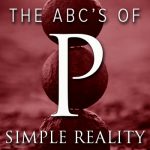
He that is slow to anger is better than the mighty, and he that ruleth his spirit than he that taketh a city.
— Proverbs 16:32
Human beings are very reactive creatures seemingly at the mercy of their psychological conditioning. “Fortunately, there is an antidote: the conscious pause. Scientists have found that although we are prone to snap overreactions, if we take a moment and think about how we are likely to react, we can reduce or even eliminate the negative effects of our quick, hard-wired responses.”[i] In Simple Reality we call these self-destructive expressions reactions.
Seth describes a profound response, which characterizes our Point of Power Practice, and the process of reconditioning or behavior modification which can change our reactions into responses, fear into compassion. “Your desire or belief will literally be reaching back into time, teaching the nerves new tricks. Definite reorganizations in that past will occur in your present, allowing you to behave in entirely new fashions.”[ii]
The goal of The Point of Power Practice involves choosing to respond rather than react every moment of every day. Each time this is accomplished, we find ourselves experiencing Simple Reality. Because the goal of meditation when profoundly understood is seeing reality as it really is we can say that in using this practice our life becomes a meditation.
When our past false-self survival strategy or other conditioning is triggered, that moment is the point of power. At that “point” we are presented with an all-important choice. If we choose to identify with the body, mind or emotions and react, remaining in P-B, we will experience afflictive emotions and suffering. If we choose to pause, remain calm and breathe, choosing to respond, we will experience the “feeling” that characterizes P-A or Simple Reality. The breath is the “thread” that leads back through the heart to the present moment and thence to the Implicate Order and the energy that is the foundation of all reality.
To hear the same process in the language of others sometimes helps internalize the meaning at a deeper level. In choosing response over reaction one has been able, as Marcus Aurelius said, “[To] give the preference to the good thing and freely choose the better, and hold to it.”[iii]
From the description by a Roman Emperor/philosopher we come forward to Daniel Brown and the modern language of psychology. “The beginner learns to identify harmful behavior and then ‘practice the opposite’ behavior. According to the laws of cause and effect such opponent action will manifest as positive changes in the stream of consciousness over time; behavior change contributes to intra-psychic change.”[iv] In other words we will have begun the process of shifting paradigms and acquiring a new identity. What then follows is the new behavior of a compassionate, liberated person.
The burden of knowledge is action.
— Anonymous
The whole strategy of The Point of Power Practice is to remain present while in the context of Simple Reality. Jane Roberts is referring to her book, The Nature of Personal Reality when she writes: “In this book Seth is saying that you can change your experience by altering your beliefs about yourself and physical existence. Seth’s main idea is that we create our personal reality through our conscious beliefs about ourselves, others, and the world. Following this is the concept that the ‘point of power’ is in the present, not in the past of this life or any other.”[v]
“You get what you concentrate upon.”[vi] The Point of Power Practice ensures that we are concentrating on a wholesome and sustainable narrative, something inherently “real.”
Human suffering includes craving for plenty, pleasure and power. We all know the illusory nature of obtaining material wealth and feeling empty, of experiencing “pleasure” and still wanting more and having others within our “power and control” and still feeling helpless. The Point of Power Practice delivers authentic power, the power of choosing a sustainable story, a wholesome identity and compassionate behavior.
Water droplets always take the path of least resistance.
Unfortunately, for most humans, it’s exactly the opposite.
And finally, to Ken Wilber who expresses himself in a fascinating, although somewhat, what can I say, “Wilberian” language. As a master synthesizer, he is one of the few people who can give us both an Eastern and Western perspective. “For both Buddhist traditions the primordial state is one of immediacy. Events quickly settle before they become built up into constructs—time/space, self, gross percepts and thoughts. The meditator must learn to negate the more common forms of reactivity—expectations, doubts, evaluatory thought, and the incessant attempt to categorize the unfolding experience. Consciousness as we ordinarily know it in the West, is not pure awareness but rather awareness as it is embodied in the psychological structure of the mind or the brain. These two components, awareness and psychological structure, constitute a gestalt, an overall interacting, dynamic system that makes up consciousness. Techniques exist, however, that are intended to free a person’s awareness from the dominance of the structure, of the machinery that has been programmed into him.”[vii]
Such a technique is The Point of Power Practice. Use it! You’ll be glad you did.
___________________
[i] Partnoy Frank. “Beyond the Blink.” The New York Times Sunday Review. July 8, 2012, p. 5.
[ii] Roberts, Jane. The Nature of Personal Reality. New York: Bantam, 1974, p. 293.
[iii] Aurelius, Marcus. The Meditations of Marcus Aurelius. New York: Avon, 1993, p. 18.
[iv] Wilber, Ken, et. al. Transformations of Consciousness. Boston: Shambhala Publications, Inc., 1986, p. 229.
[v] Roberts, op. cit., pp. ix-xi.
[vi] Ibid., p. 46.
[vii] Wilber, op. cit., pp. 259-260 and p. 265.


